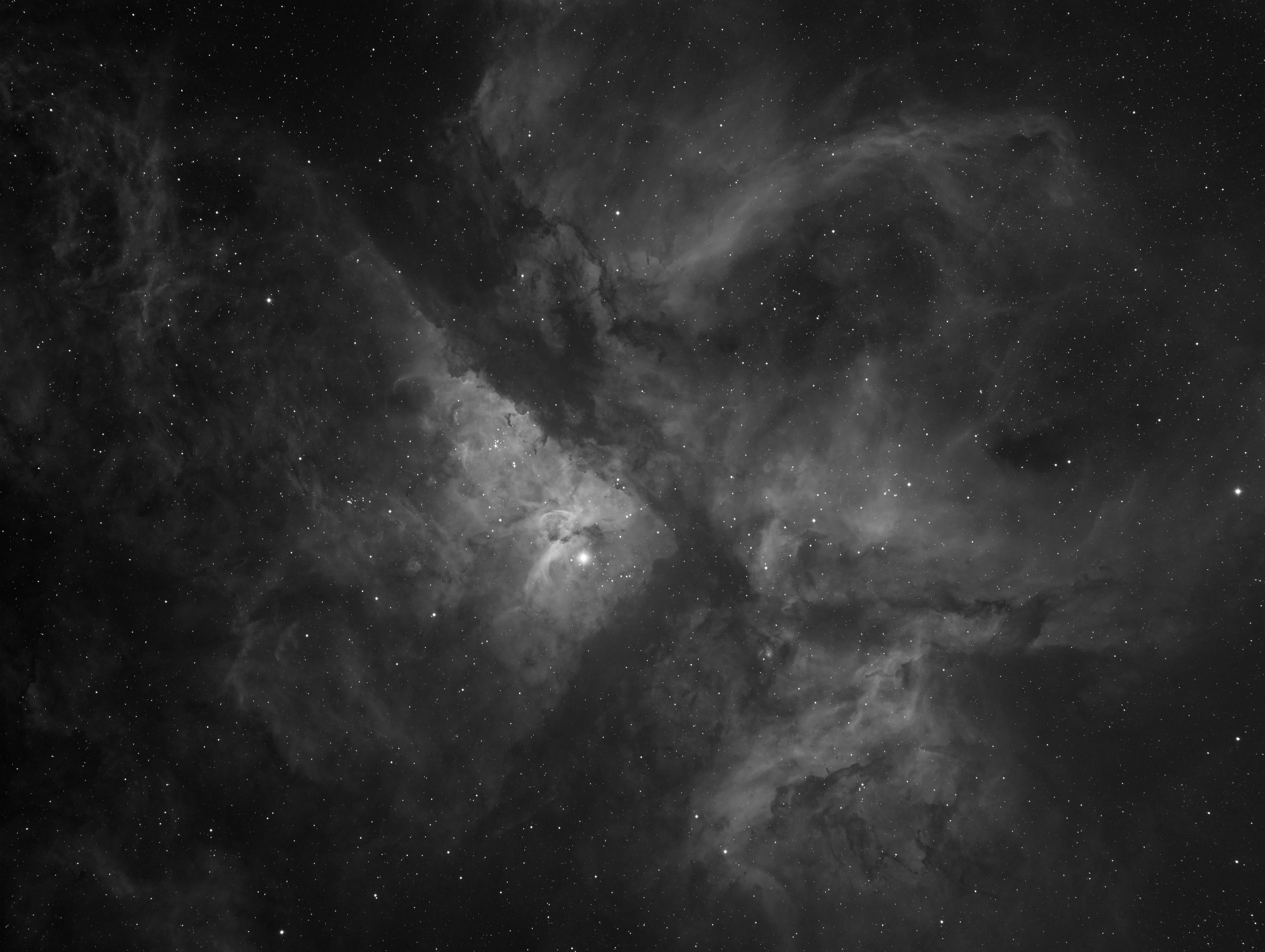Eta Carena is a massive star with a history of spectacular flaring and fading behavior.
In April 1843 Eta Carena briefly became second only to Sirius as the brightest star in planet Earth's night sky,
even though at a distance of about 7,500 light-years, it is about 800 times farther away.
Eta Carena, seen near the center of this image, is surrounded by a complex and evolving nebula.
The wispy, convoluted filaments are clouds of dust glowing at Halpha wavelengths.
Astronomers hypothesize that Eta Carena itself will explode as a supernova in the next million years.
Massive Eta Carena is considered a candidate for a hypernova explosion and the potential source of
future gamma-ray bursts.
Imaged on 10 April 2021 in color with AP130 and QSI 683wsg-8 camera, 20 minutes per R, G and B channels, luminance of the nebula from the Halpha image below (done in 2017)

Imaged on 10 April 2017 in Halpha with AP130 and QSI 683wsg-8 camera,
